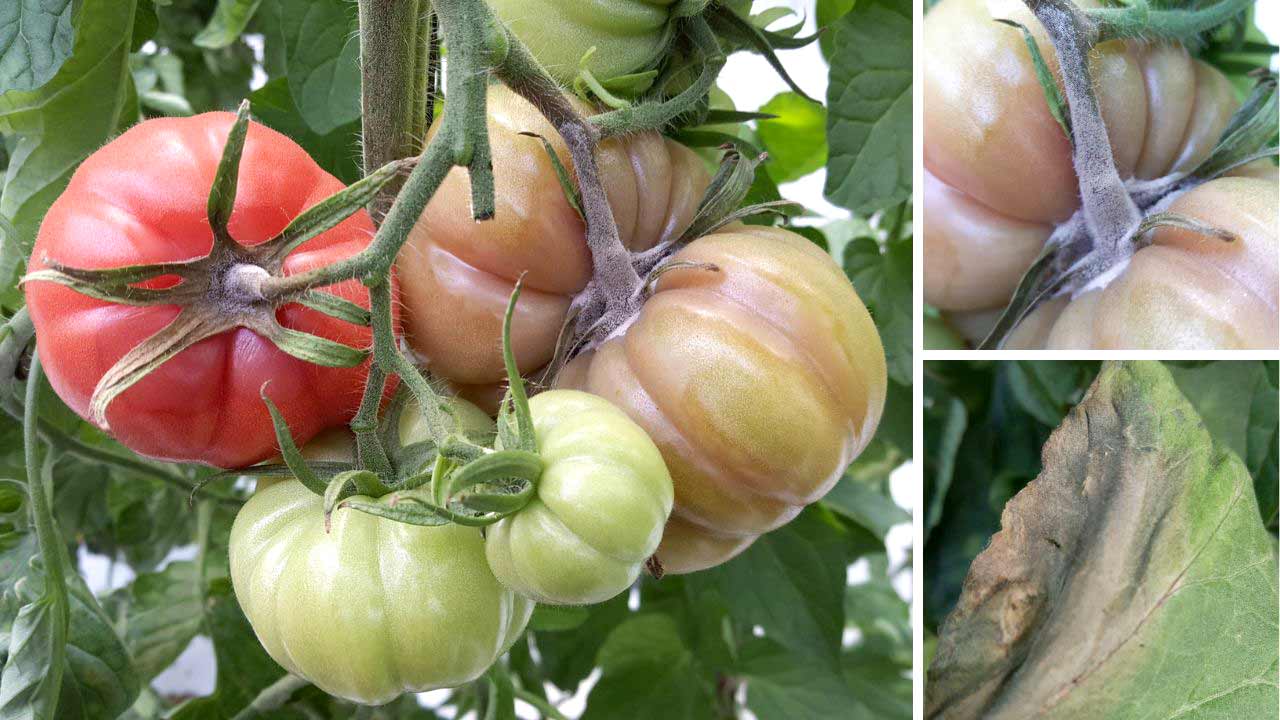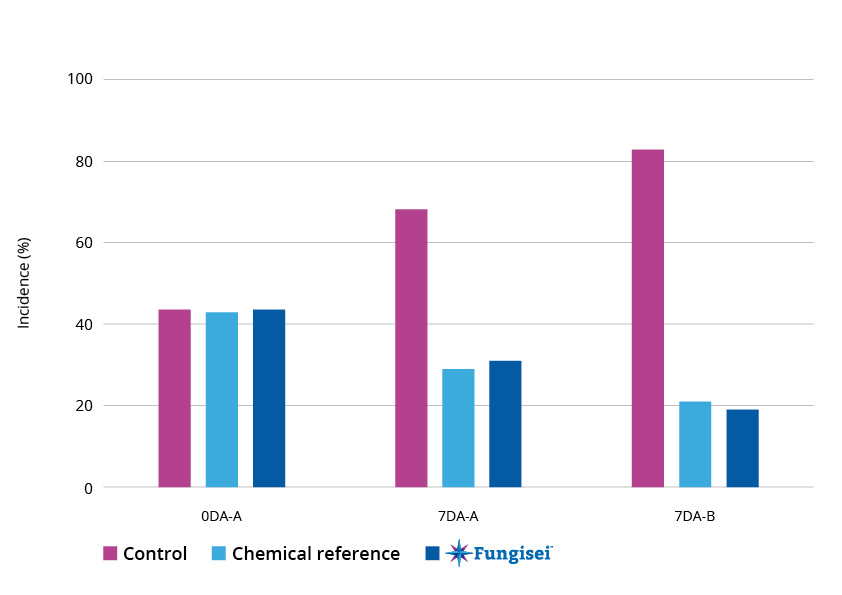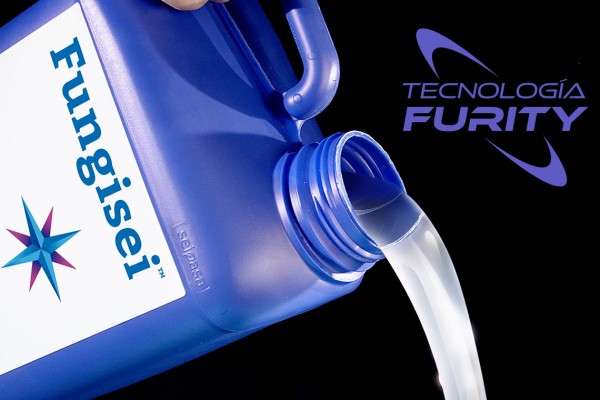Botrytis on tomatoes: how it can affect you if you do not take the right measures

Tomato crop affected by botrytis
This is a real case of botrytis on tomatoes that thousands of growers face every year. Let’s take the example of a farmer who has a tomato greenhouse in a temperate climate zone and is going through a period of high relative humidity and temperatures between 15 and 23ºC.
The farmer does not properly ventilate the greenhouse, causing condensation that, far from reducing the humidity, contributes to increasing it. In this scenario we have the first breeding ground for the appearance of grey rot in tomatoes. Fungisei is a highly effective biofungicide solution developed by Seipasa for the prevention and control of high impact diseases such as botrytis.
Although we are focusing on this case of botrytis in greenhouse tomatoes, it is a disease that also affects other vegetables and other crops such as strawberries, grapes or ornamentals. Botrytis is an old acquaintance for growers. It is a pathogenic fungus that can appear at any stage of the crop cycle and affect all parts of the plant: stems, leaves, new shoots, flowers and fruit.
Grey rot, as the disease is commonly known, limits production and reduces crop quality. Spores have the ability to survive on plant surfaces even in the absence of favourable conditions, so immediate removal of affected plants or fruit is essential.
Preventing grey rot
Botrytis also has the ability to spread very rapidly: spores germinate in the infected area and are introduced into the tissues of healthy plants. They can do this through any small wound caused by pruning, insects or weather conditions such as rain or hail. If the environmental conditions are as described in the introduction to this article, the risk of disease outbreaks is even greater.
Special care must be taken with ventilation and pruning. The prevention of grey rot also requires great vigilance in visual inspection of the plots to detect possible symptoms. These are quite obvious and range from the appearance of deformities and brown spots on the leaf margins, yellowish or brownish spots on the fruit, to a kind of grey velvety mould.
Fungicides against botrytis on tomatoes
Seipasa recommends using Fungisei to prevent and control botrytis on tomato plants. It is a microbiological fungicide with phytosanitary registration for the control of high impact diseases.
Developed from a Bacillus subtilis strain of high efficacy and purity, it incorporates patented Furity technology, which protects the active ingredient, ensures stability and homogeneity, and maximizes efficacy.
Figure 1: Botrytis incidence on tomatoes.
Figure 1 shows the results of a trial conducted in Morocco on botrytis on tomatoes. The results show the efficacy of Fungisei in controlling and reducing disease incidence after the first application. The product also matched the efficacy of the chemical reference with which it was compared.
Fungisei has a dual preventive and curative action. The powerful implantation of the micro-organism allows it to occupy the space and prevent the pathogen from installing itself. This antagonism is preventive. The second mode of action is the systemic induction of resistance in the plant, which is both preventive and curative. Once installed in the plant, the micro-organism activates the plant’s defence system and helps it to protect itself from pathogen attack.
The third mode of action is also curative, as Fungisei produces natural antibiotics, including lipopeptides, which destroy the membrane of the phytopathogenic fungus and cause cell death.
Inclusion in IPM
Fungisei is a solution approved for use in organic farming under UNE certification and is an ideal tool for inclusion in integrated pest management programmes to reduce the chemical burden of treatments. This is demonstrated by the results shown in figure 2 of the botrytis control trial on tomatoes carried out in Alicante.
Six applications were made at intervals of 6 to 9 days to compare a conventional strategy using three chemically synthesized active ingredients with another mixed strategy including Fungisei. In the latter, two of the applications of chemically synthesised active ingredients were replaced by applications of Fungisei, with an efficacy superior to that of the conventional strategy.
Figure 2: Average percentage of fruit infected with botrytis symptoms (incidence).
The reduction in chemical load within the mixed strategy was between 30 and 78% for each of the three synthetic active ingredients used.
In addition to its efficacy, Fungisei is easy to use. It is a liquid formula that dissolves quickly and easily in the tank without stirring. It does not separate into phases after a few hours in the preparation tank and has a very wide compatibility with other synthesis products and also with copper. In addition, Fungisei leaves no stains or residues on the fruit after treatment and can be applied the day before harvest as it has no safety period.



.jpg)


